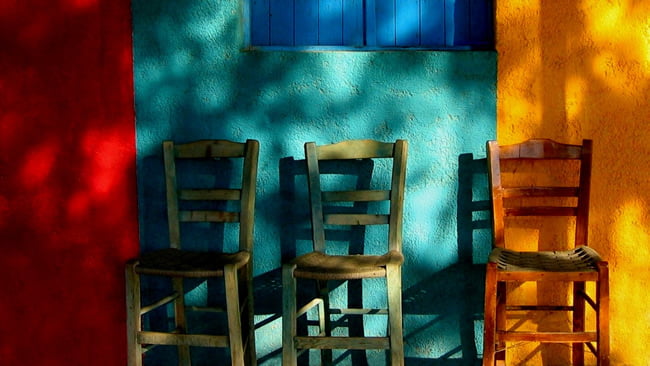Colors Representations in Different Cultures
We see colors everywhere and in everything around us. Since the dawn of time, colors have played a significant role in our lives, as they influence our thinking, emotions, and moods. Color symbolism is different from culture to culture, it can be also different in the same culture in different eras. In this blog, we will talk about colors representations in different cultures.

40,000 years ago, artists used to produce different colors and shades using a combination of soil, clay, animal fat, burnt charcoal, chalk, and crushed flowers. Color production by early artists created a basic color palette that consisted of white, black, red, yellow, and brown.
Ancient nations have used colors to represent their civilizations. Over the years, color has been used as a visual representation to distinguish between different cultures.
Power of Colors
As color representation is usually able to cause changes and evoke reactions, colors are more powerful than we think. Colors can be used to represent good and evil, beauty and ugliness, war and peace. As everyone has his favorite color, we have the power to welcome some colors and avoid others. For example, red represents love in some cultures, and it represents danger in others. Nations used this variation in color symbolism to develop and represent their identity.
Colors Cultural Representation
Colors became one of the most important and powerful representations of different cultures. Some colors represent good signs in a culture, and the same colors may be considered bad signs in other cultures.
-
Red
In western cultures, red represents excitement, warning, danger, love, passion, stop, hot, spicy, Christmas (with green), and Valentine’s Day. However, it represents luck, long life, beauty, and wealth in Eastern/Asian cultures. In the Middle East, red represents danger, caution, war, bravery, and love. In Latin America, red represents passion, religion, sunny, and death. In Africa, it represents death and bloodshed.
-
Blue
In general, blue represents trust, inner stability, calmness, safety, philosophy, and official business. In Eastern/Asian cultures, blue represents immortality, healing, sky, water, and relaxation. In the Middle East, blue represents safety, protection, and spirituality. In Latin America, it represents sky, freedom, infinity, and mourning. It represents harmony and love in Africa.

-
Yellow
The color of energy, happiness, and danger. Yellow represents hope, happiness, visibility, caution, sunny, the warmth of the sun, and envy. In Eastern/Asian cultures, yellow represents courage and prosperity. It’s the color of luck in Thailand. In the Middle East, yellow represents nature, desert, wealth, gold, and success. However, it represents mourning in Egypt because the mummified bodies were laid to rest in gold masks. In Latin America, yellow represents wealth and religion. In Africa, it represents wealth and riches, spiritual purity, fertility, beauty, and the precious nature of life.
-
White
White represents purity, innocence, goodness, angels, hospitals, and peace in western cultures. However, it traditionally symbolizes funerals in Italy. In most eastern cultures, white represents death, mourning, unhappiness, and misfortune. In the Middle East, white indicates purity, peace, and equality. Muslims wear Ihram (a very simple white attire) during the pilgrimage. In most Arab countries, White represents marriage, however, it also represents funerals. In Africa, it represents purity, cleansing, goodness, good luck, and festive occasions. However, it indicates illness in Ethiopia.
-
Black
The color of nights, darkness, and shadows. Black can be considered a prestigious, intimidating, and powerful color. In many western cultures, black represents sophistication and formality. It also represents death, evil, mourning, darkness, illness, bad luck, and mystery. In China, black indicates good health and prosperity. However, in some other eastern cultures, it symbolizes mystery, evil, rebellion, and death. In the Middle East, black represents both rebirth and mourning, besides mystery, evil, darkness, and bad luck. In Africa, it symbolizes age, maturity, and masculinity.
-
Green
The color of nature. In most cultures, the green color symbolizes grass, trees, and leaves, which is why it represents nature. In western cultures, green represents luck, progress, and environmental awareness. However, in some other cultures like Indonesia, it is considered a forbidden color, representing exorcism and infidelity. In Mexico, green is considered the national color of the country as it represents independence. However, it is the color of death in South America. Green has a strong association with the Muslim culture, and it is used in several Middle Eastern national flags as a symbol of religion.
Conclusion
Like symbols, colors can represent different meanings, activities, emotions, and cultures. Human eyes can perceive up to 10 million colors. From region to region, and culture to culture, color perceptions can be different. A single color may have different, even contrasting meanings around the world. Essentially, the color you use has a great impact on how people will view your product or brand. A wedding planner app with a white background, for example, may succeed in the Western culture, but it could be offensive in most Eastern cultures. Therefore, understanding colors and their importance to being culturally-correct when expanding into a new market is crucial to the success of your business.
Globalization Partners International has teams of Localization Project Managers worldwide who have years of industry experience in helping businesses achieved their localization project goals. For more information please check our case studies or contact us.
